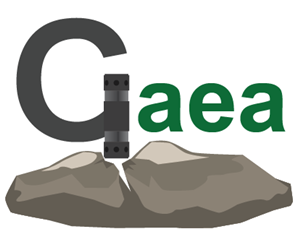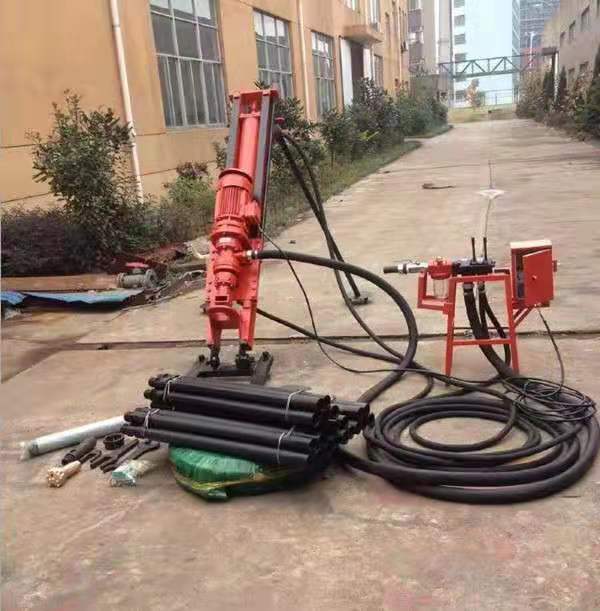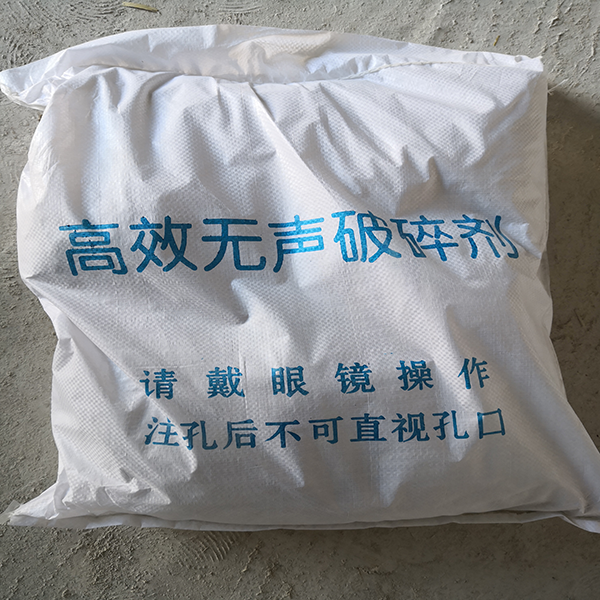
- China
The drilling rig is a type of compound power, which is powered by a motor and compressed air. The power for the rotation of the drilling tool of the drilling rig comes from the electric motor, and the impact force of the impactor comes from the compressed air. When the motor works, the electric energy is converted into rotating torque and transmitted to the reducer, so that the drill pipe connected to the output shaft of the reducer rotates. The alloy teeth at the front end of the drill pipe continuously impact and break the rock, and the broken rock is ground into powder by the continuously rotating drill bit. , It is blown to the ground by the compressed air discharged from the drill bit exhaust hole. The axial force generated by the propelling cylinder is sent to the drilling tool for drilling.
Simple down-the-hole drilling rig, hammer drilling, down-the-hole drilling rig, tripod-type down-the-hole drilling
Related reports:
Working principle and classification of hydraulic down-the-hole drilling rig;
What is the development trend of down-the-hole drilling rigs;
The working principle and classification of down-the-hole drilling rigs;
The tripod-type down-the-hole drilling machine is a versatile and powerful tool designed for various drilling applications in industries such as geology, mining, and construction. This advanced drilling equipment is known for its stability, reliability, and high drilling performance.
Featuring a robust tripod structure, this drilling machine offers exceptional stability during drilling operations, ensuring accurate and precise results. The tripod legs are adjustable and can be securely positioned on different terrains, providing a solid foundation for the drilling process.
The machine's key advantage lies in its ability to perform down-the-hole drilling, a method that involves drilling through the surface by hammering the drill bit into the ground. This technique enables efficient and deep drilling, making it suitable for a wide range of geological exploration and mining projects.
With its powerful drilling capabilities, the tripod-type machine can reach significant depths and penetrate various ground formations, including soil, rock, and other geological strata. It is equipped with a reliable drilling system that allows for adjustable drilling speed, torque, and depth control, providing operators with precise control over the drilling process.
Furthermore, the tripod-type down-the-hole drilling machine is designed for ease of use and mobility. It can be easily transported to different worksites, thanks to its compact and portable design. The machine is equipped with user-friendly controls and safety features, ensuring operator comfort and security during drilling operations.
In summary, the tripod-type down-the-hole drilling machine combines stability, reliability, and powerful drilling capabilities. Its versatility and adaptability make it an ideal choice for geological exploration, mining operations, and construction projects. With its advanced features and robust construction, this drilling machine delivers exceptional performance, efficiency, and accuracy, meeting the demands of various drilling applications.
Technical parameters of electric down-the-hole drilling rig
Model | 70 | 100 |
Working air pressure (Mpa) | 0.4-0.5 | 0.5-0.7 |
Drill rod speed (r/min) | 93 | 93 |
Drilling diameter (mm) | 83-100 | 83-100 |
Motor power (KW) | 4 | 4 |
Machine weight (kg) | 180 | 260 |

Rig installation and preparation before drilling:
After the rig is transported to the construction site, check the parts for defects and confirm that there is no damage before assembling and refueling.
First put the two front legs of the carriage at the working position, and adjust the support rod to determine the angle of the carriage.
When connecting the motor cable, the power supply should be cut off. In principle, the connection of the motor cable should be before the main power supply is connected, and the motor power supply should be tried to rotate to see if the rotation direction of the motor is consistent with the direction on the controller, otherwise it should be stopped immediately Reversing.
Check that the bolt connections are tight and reliable, whether the pipes are firmly connected, and no air leakage, oil leakage, etc. are allowed.
A proper amount of 32# mechanical oil is installed in the lubricator. After the preparation work is completed, the no-load test machine can be carried out.

FAQ:
1.What is tripod-type down-the-hole drilling?
Tripod-type down-the-hole drilling refers to a drilling method that utilizes a tripod structure to support and stabilize the drilling equipment. It is specifically designed for drilling water wells and involves the use of a down-the-hole hammer for efficient rock penetration.
2.How does tripod-type down-the-hole drilling work?
In tripod-type down-the-hole drilling, a three-legged tripod is set up to provide stability. The drilling equipment, including the drill bit and down-the-hole hammer, is mounted and operated from the top of the tripod. The down-the-hole hammer strikes the rock surface, while compressed air flushes out the cuttings and facilitates drilling progress.
3.What are the advantages of tripod-type down-the-hole drilling?
Tripod-type down-the-hole drilling offers several advantages, including its stability, versatility in various terrains, efficient rock penetration, and the ability to reach greater drilling depths. It is particularly well-suited for water well drilling applications.
4.What types of formations can be drilled using tripod-type down-the-hole drilling?
Tripod-type down-the-hole drilling can be used in a wide range of formations, including soft to hard rock formations such as sandstone, limestone, granite, and shale. The selection of drill bits and hammers can be tailored to the specific formation conditions.
5.What considerations should be taken into account when using tripod-type down-the-hole drilling for water well drilling?
When using tripod-type down-the-hole drilling for water well drilling, factors such as the required well depth, formation characteristics, water source availability, and drilling speed should be considered. It is also important to adhere to safety guidelines and use appropriate personal protective equipment during drilling operations.















